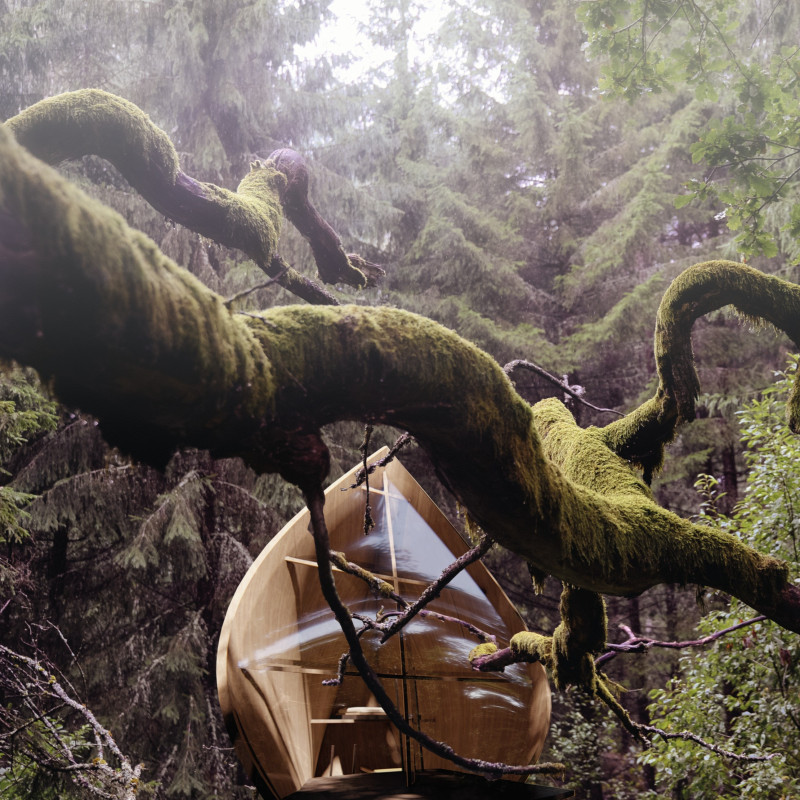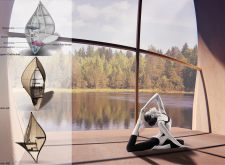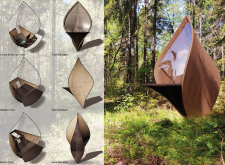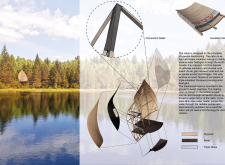5 key facts about this project
The cabin merges with its natural surroundings, offering a quiet space for meditation. Set within a tranquil landscape, the design focuses on a strong connection to nature. By encouraging openness and light, the concept draws inspiration from the form of a tree crown. This connection to nature shapes both the spatial arrangement and visual appeal of the cabin.
Form and Aesthetics
The shape of the cabin reflects the curves of its environment, creating a bond with the land. Large windows allow sunlight to enter, illuminating the interior while framing outdoor views. This design not only lets in natural light but also invites the beauty of nature inside. The structure encourages users to experience the relationship between indoor and outdoor spaces.
Interior Design and Functionality
Inside, the cabin follows a minimalist style that promotes calmness and quiet reflection. The straightforward layout allows individuals to personalize their areas, enhancing their experiences. All spaces are designed to accommodate different ways of meditating and relaxing, making it easy to connect with the surroundings.
Material Specifications
Wood is a key material in the cabin’s interior, providing warmth and supporting the connection with nature. The use of cellulose insulation and mineral wool board helps with temperature control and energy efficiency. Large south-facing windows made of triple-insulated glass enhance passive solar heating, ensuring the space remains bright while minimizing energy loss.
Sustainable Systems
The mechanical systems are planned carefully to enhance energy use. The mechanical room is located underground, which reduces heat loss throughout the structure. A heating system delivers warmth evenly, while a propane tank-style water heater works with heat recovery ventilation to maintain comfort during colder months. These features work together to create a sustainable environment that does not compromise on design.
The roofline of the cabin mimics the natural contours of the landscape, reinforcing its connection to the environment. The generous amounts of glass enrich the interior, ensuring the beauty of nature is always within view.






















































